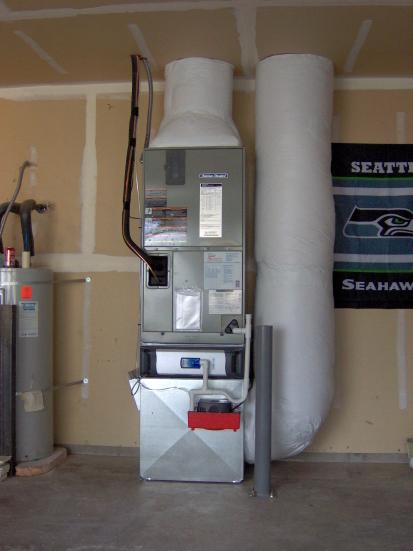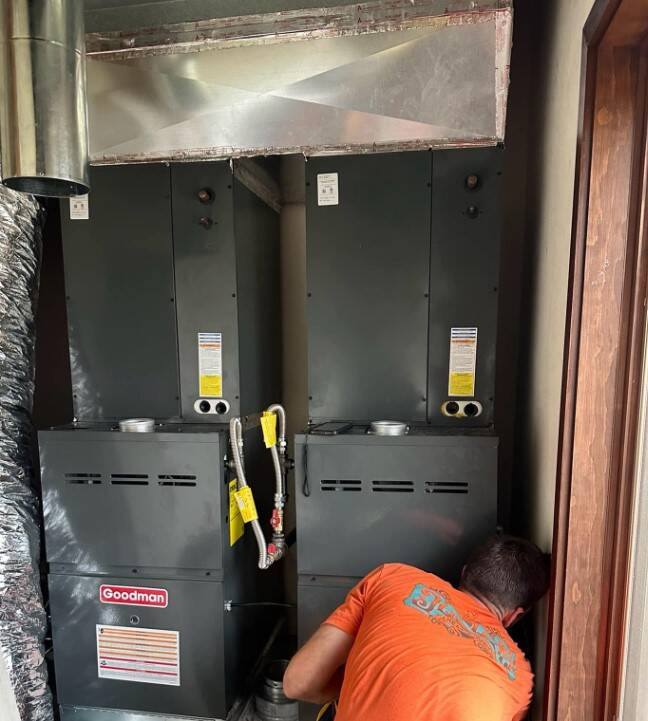Choose the right HVAC company for your home's cooling needs
Choose the right HVAC company for your home's cooling needs
Blog Article
The Ultimate Guide to Furnace Installation for a Cozy Home
Heating system installation is an essential facet of maintaining a comfortable home setting, especially throughout the colder months. Recognizing the numerous types of furnaces readily available and the relevance of picking the ideal size can substantially influence both efficiency and comfort degrees. A comprehensive installation procedure, enhanced by the right tools and products, ensures optimal efficiency. This overview aims to equip house owners with the knowledge required to make educated decisions and apply efficient upkeep methods. As you consider these factors, the inquiry remains: what steps can you require to ensure your furnace offers you well for several years to come?
Kinds Of Furnaces
When taking into consideration furnace installation, understanding the different kinds of furnaces readily available is vital for making an informed choice. The main kinds of heating systems include gas, electric, and oil heating systems, each offering distinct advantages and factors to consider.
Gas heating systems are one of the most typical selection due to their effectiveness and reduced operational costs. They make use of gas or propane, supplying fast home heating and consistent efficiency, making them excellent for cooler environments.
Electric furnaces, while generally easier to set up and maintain, often tend to have greater operational costs. They are commonly preferred in locations where gas service is not available or for homes with existing electric infrastructure.
Oil heating systems, though less typical today, remain a sensible alternative in particular areas. They burn heating oil, which can be useful during colder months, yet their reliance on oil distribution presents possible difficulties.
Furthermore, there are high-efficiency versions offered across these kinds, which can dramatically lower power usage and utility expenses. Eventually, comprehending these heating system kinds will certainly help property owners select a system that straightens with their home heating needs, spending plan, and energy choices.
Picking the Right Size
Choosing the proper dimension for a heater is important to making certain optimum efficiency and power performance. An undersized furnace will certainly have a hard time to preserve comfortable temperatures throughout the chilly months, leading to increased damage, higher energy expenses, and possible system failing. Alternatively, an oversized heater might cycle on and off as well often, leading to inefficient heating and uneven temperature circulation within the home.

Heating system sizes are typically measured in British Thermal Systems (BTUs), which suggest the amount of power needed to heat a room. It is recommended to seek advice from a certified HVAC specialist that can execute the essential computations and recommend an appropriately sized device. furnace repair. Purchasing the ideal furnace dimension not just boosts comfort but also adds to long-term energy savings and system dependability
Installation Refine Review
As soon as the appropriate heating system size has been figured out, the next action involves recognizing the setup procedure. This process commonly begins with an extensive assessment of the installment site, including the existing ductwork and air flow systems. Proper preparation is essential to guarantee seamless assimilation and optimum performance of the brand-new heating system.
The installation typically consists of separating the old unit, which entails safely getting rid of any kind of electric connections, gas lines, and ductwork affixed to the previous heater - furnace repair. As soon as gotten rid of, the new heating system is carefully located and leveled, making certain that it fulfills the maker's specifications for optimal procedure
Following, the installer will certainly attach the needed gas and electric lines, adhering to regional codes and safety and security guidelines. Following this, ductwork might need to be customized or replaced to suit the new system, making certain reliable air flow throughout the home.

Important Devices and Materials
Gathering the crucial devices and materials is important for a successful heating system installment. Appropriate prep work guarantees that the installment process is effective and minimizes the possibility for errors.
Trick tools called for consist of a drill, screwdrivers, wrenches, pliers, and a degree. A multimeter is crucial for electrical connections, while a pipe cutter and adjustable wrench are essential for gas line installment. Furthermore, a measuring tape and a stud finder will help in making certain accurate positioning and safe fastening of the furnace.
In regards to products, you will need ductwork, insulation, and securing tape to make certain ideal airflow and energy effectiveness. It is likewise crucial to have a new heating system filter accessible, in addition to airing vent useful site materials, such as PVC pipeline or metal flue, depending upon the type of heating system being mounted.
Safety devices, consisting of handwear covers, goggles, and a face mask, is likewise vital to secure versus dirt and particles throughout setup. Having all these tools and products easily available not just enhances the process but also improves the security and efficiency of the heater installment.
Upkeep Tips for Longevity
To make sure the durability of your heating system, it is vital to execute a normal maintenance schedule that attends to key components of the system. Start by replacing or cleaning up the air filter every one to 3 months, as a clogged my website up filter can restrict airflow and lower efficiency. In addition, examine and clean up the blower setting up to avoid dust build-up that can impede performance.
Next, examine the thermostat settings and recalibrate if required to make certain exact temperature level policy. Inspect the ductwork for leaks or obstructions, as this can cause power loss and unequal heating. Consistently lubricate the motor and bearings according to the maker's recommendations to reduce damage.
Expert examinations need to take place yearly, where a certified technician can assess the heating system's total condition, check for gas leakages, and guarantee that safety and security features are working correctly. Lastly, take into consideration installing a programmable thermostat to enhance power usage and preserve consistent home temperatures. By taking on these upkeep practices, you can enhance your heating system's performance, expand its life expectancy, and inevitably delight in a comfy and comfy home environment.
Conclusion
Reliable furnace installment is critical for attaining optimum home convenience and power efficiency. Comprehending different heater kinds and picking the appropriate size makes certain proper functionality (furnace repair). A meticulous installation process, sustained by the right devices and HVAC Portland materials, contributes considerably to the system's efficiency. Moreover, routine maintenance plays an important duty in prolonging the lifespan of the furnace. Abiding by these standards promotes a warm and welcoming living area, important for enduring the challenges of colder months.
Report this page